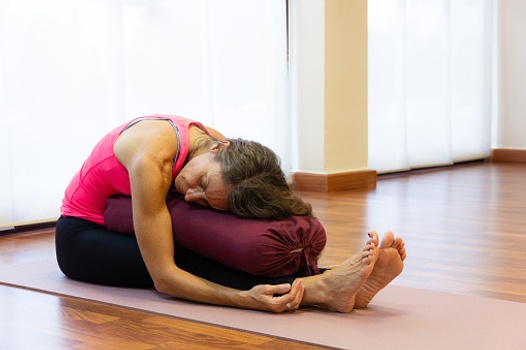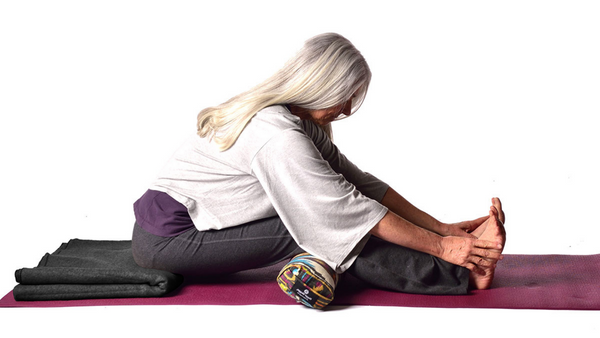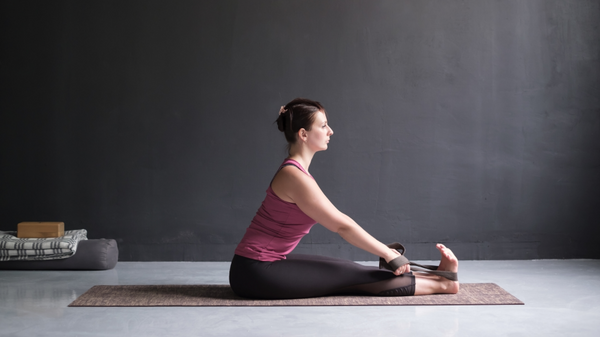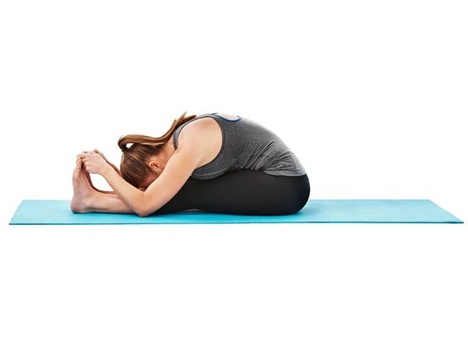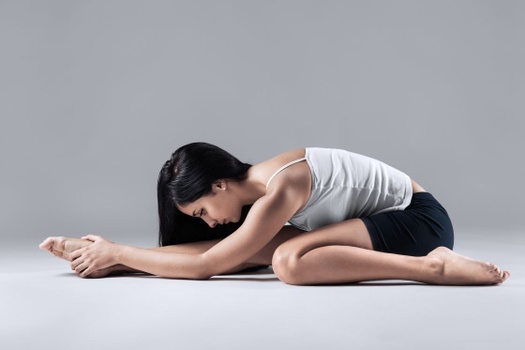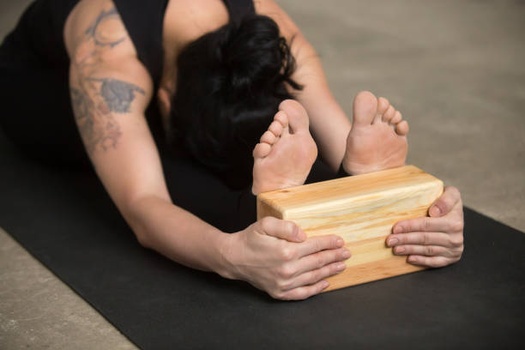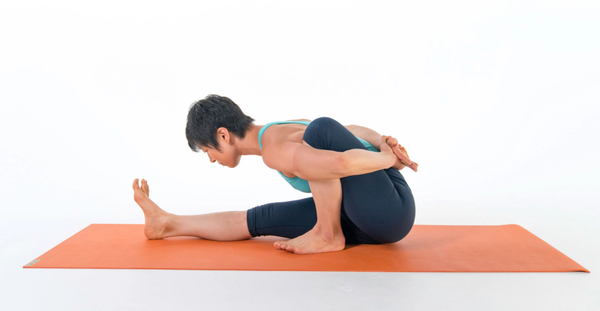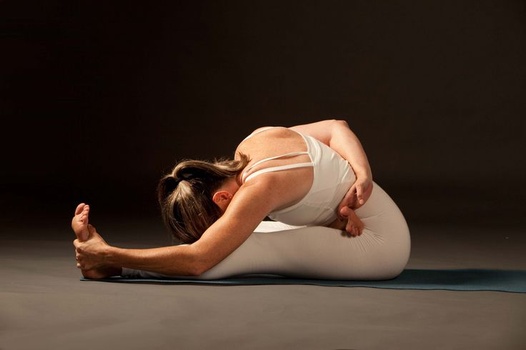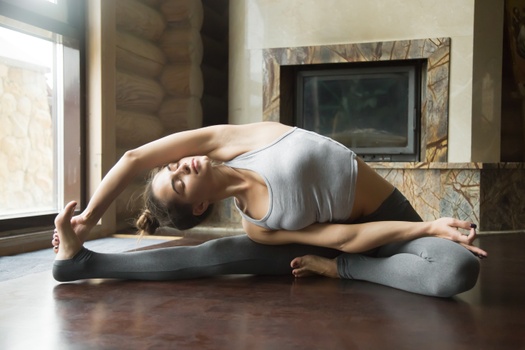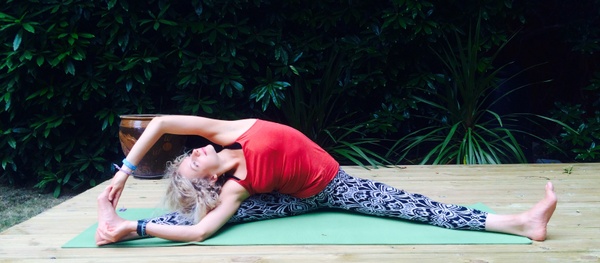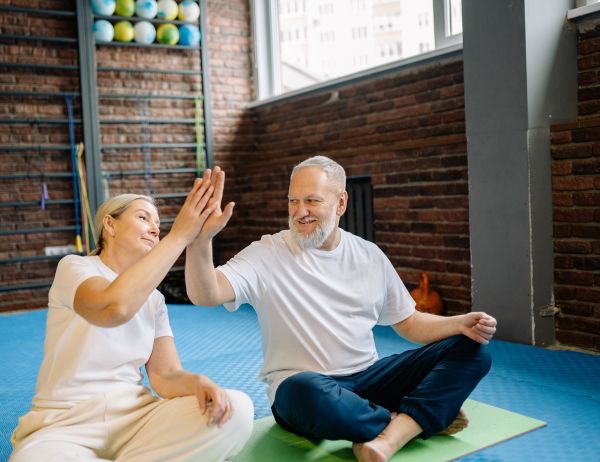With the help of certified instructors, we’ve divided our detailed guide for this asana into four different parts below. These four parts describe warm-up poses, relaxation poses, tips, and a step-by-step guide to practice and execute Paschimottanasana.
Part 1 - Preparatory Poses for Paschimottanasana
Start with a few simple ankle rotations and back stretches to activate the blood flow in those areas, especially if you’re performing this pose after waking up early in the morning.
Keeping the back and spine straight in Paschimottanasana might be difficult for new yogis. The following are some of the preparatory positions that you can use to warm up your leg and back muscles before the main pose:
1. Baddha Konasana (Bound Angle Pose) - In this seated warm-up pose, the inner thighs and lower back are activated right away. Start with sitting in the staff pose and then gently bend your legs from your knees and place them in Namaste Feet formation by touching the bases of your feet together.
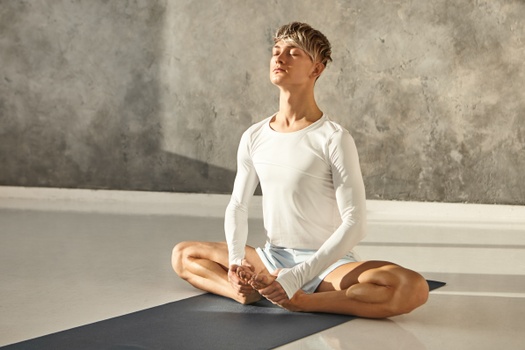
Make sure your knees touch the yoga mat and hold this pose for five minutes to attain a deeper opening in the glutes and thighs. For stability in the feet placement, hold both your feet between your palms.
2. Baddha Konasana Uttanasana (Bound Angle Forward Bend Pose) - Arch the lower back and bend your head down over the Namaste Legs formation.
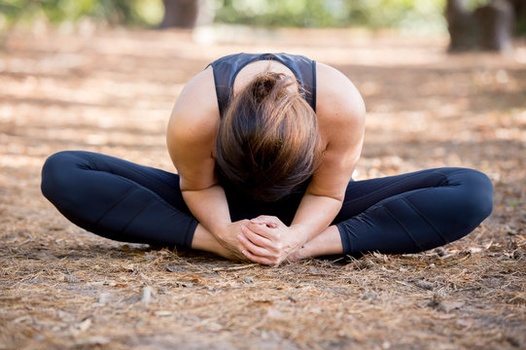
This will help you stretch and open the back muscles by triggering more blood flow in that region. Hold this pose for three to five more minutes.
3. Balasana (Child Pose) - Get seated onto your shins and place your hands behind you by reaching for your heels; you'll feel a slight stretch in your spine, shoulders, and neck. Plus, this pose helps to activate your abdominal muscles.
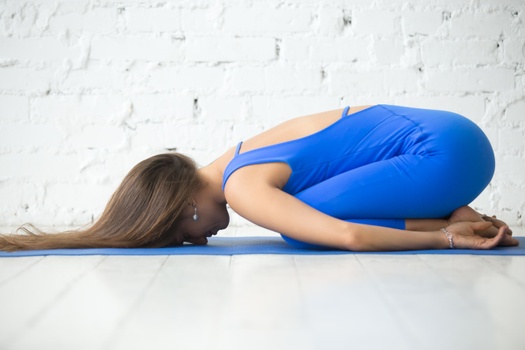
Make sure to bring your upper body closer to the ground and hold this pose for three to five minutes. Once you feel the release of tension, your body will be completely activated and ready for the main practice.
Part 2: Step-by-Step Instructions to Perform Paschimottanasana
Following are steps to practice the Seated Forward Bend:
Step 1- Sit in the center on the mat and get into Dandasana (Staff Pose).
Step 2- By stretching both legs out in front of you, stay seated in this posture with your spine raised to the sky. Make sure the back of your knees are touching the yoga mat.
Step 3- With your arms stretching out, take a deep breath and raise them entirely over your head as you fill up your lungs.
Step 4- Now, slowly lean forward with your stretched-out arms and place your head and chest onto your legs with a deep exhale.
Step 5- Both your arms should flex forward and hold your big toe. Engage and tuck your abdomen in as you bring your chin and chest close to your knees.
Step 6- To relax your lower back and re-vitalize the spine, focusing on breathing with your head down.
Breath Awareness: Make sure to inhale deeply when seated in the staff pose and exhale twice the size you inhale while bending forward. Also, follow a steady pace of breathing continuously, while holding the pose for longer durations.
Performance Duration for Beginners: Hold the Paschimottanasana for 1 minute.
Performance Duration for Advanced: Hold for as long as you feel comfortable.
Part 3: Things to Keep in Mind
Proper alignment is crucial when practicing Seated Forward Bend. Here are a few cues for beginners to keep in mind for a safe practice of Paschimottanasana:
Try not to overstretch: Overstretching can occur while pushing the body way further than it needs to. Make sure your buttocks are glued to the mat, not rising. If the butt is lifted, you are putting too much strain on your shoulders and neck.
Keep the back straight: The urge to get your head down onto your shins can make you round your back while forward bending. So, make sure you lean forward, vertebrate-by-vertebrate, and keep your back straight. You need a straight back to breathe smoothly without any obstruction.
Do not lock the knees: In order to feel a muscle stretch in the hamstrings, it’s common for yogis to lock up the knees and make the back of the knees touch the mat. This is the wrong way of doing it, as this can strain the knee joints, leading to pain. To avoid this, make sure you engage your thighs and quads with a slight bend in the knees to stop them from locking up.
Part 4: Relaxing Poses After Paschimottanasana
The Seated Forward Bend is itself known as a relaxing counterpose for backbends in yoga. But, to relax after this pose, we have listed three yoga asanas below that will provide deep relaxation to your body after an elongated Paschimottanasana practice.
1. Dandasana (Staff Pose): Sit back up from the seated forward fold into the staff pose. Inhale deeply and erect your spine towards the sky.
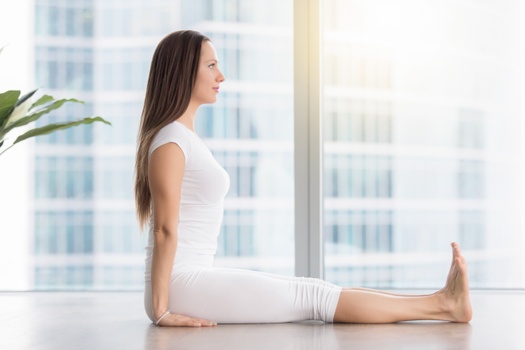
Place your hands on the sides of your glutes on the ground and hold this pose for two to three minutes here. Ensure your neck's alignment is neutral while gazing in front of you.
2. Setu Bandha Sarvangasana (Bridge Pose): Lay down in the Corpse Pose and take a few deep breaths here. Place your hands on the side of your mat. Now, press with the help of your hands and feet to lift the core upwards.
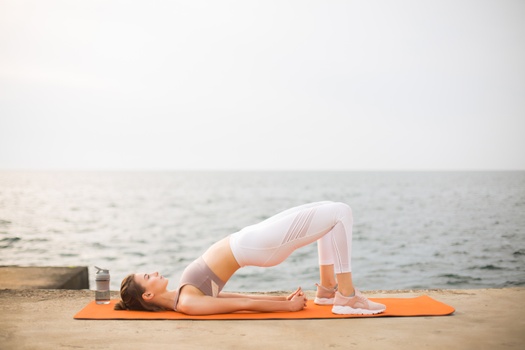
This pose works as a counteraction for the Paschimottanasana, as the core is flexing up towards the sky; it assists the lower back and hamstrings in getting back into normal alignment.
3. Purvottanasana (Upward Plank Pose): This is also known as the reverse plank position. It is commonly practiced after Paschimottanasana, releasing any tension left behind around the lower back and spine.
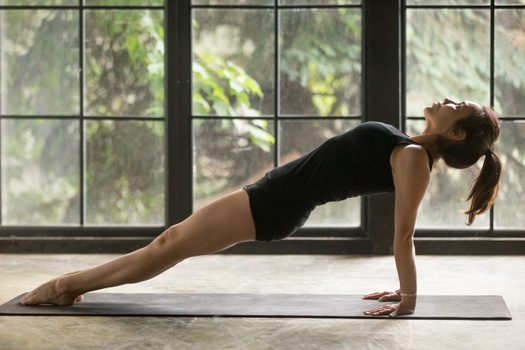
So, first, lift your body on all fours in the reverse tabletop position and then straighten up both your legs to execute Purvottanasana. Hold this posture for only 60 to 90 seconds, and then lie down back in Savasana.










